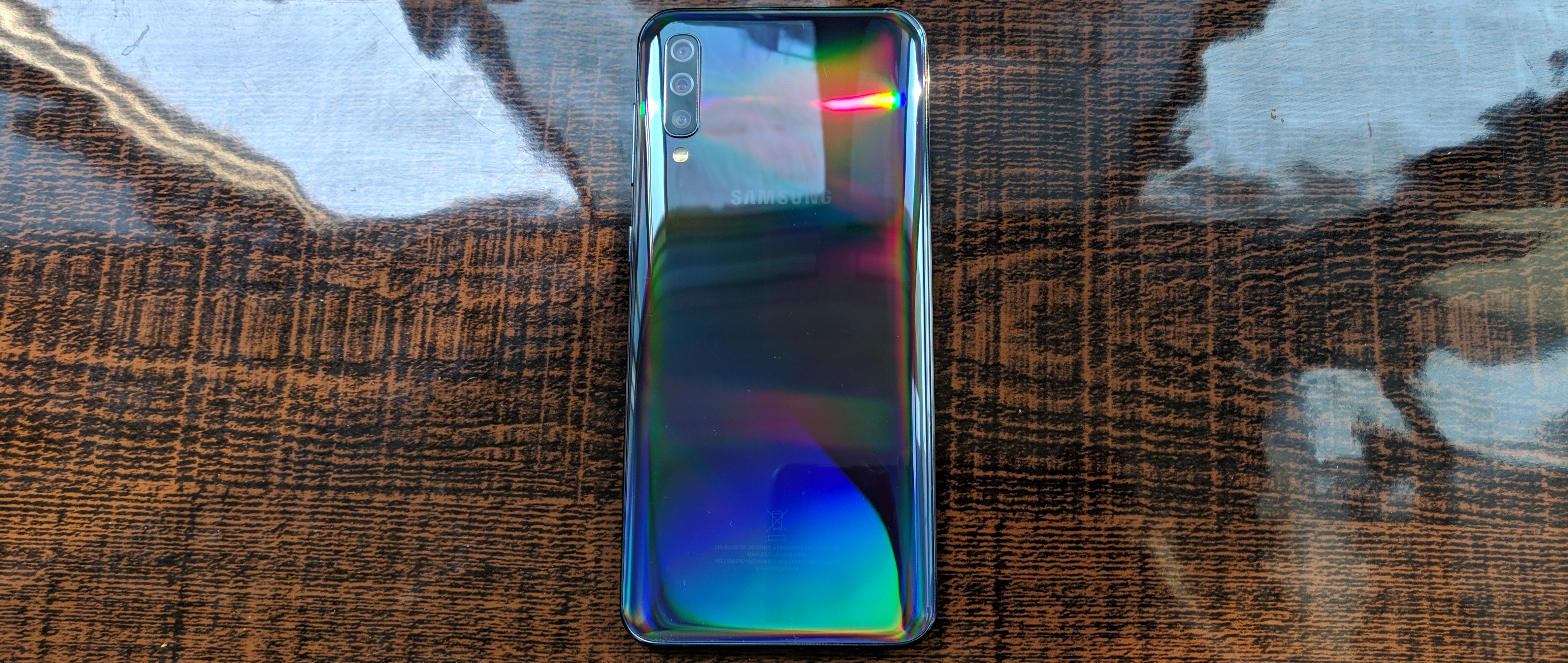Why you can trust TechRadar
Performance
Samsung’s Exynos 7 series chipset forms the heart of the Galaxy A50. The Exynos 9610 is a chipset with an octa-core CPU, where four Cortex-A73 high-powered cores are clocked at 2.31GHz and four power-efficient Cortex-A53 cores are clocked at 1.74GHz. It is also the first chipset in the series to be fabricated using the 10nm FinFET architecture process. For the graphics side of things, the A50 has Mali-G72 MP3 GPU at its disposal.
This is paired with 4GB/6GB of RAM and 64GB storage which can further be expandable by up to 512GB.
One of the latest additions to the Galaxy A-series is that the phones run on Samsung’s new interface, the OneUI. It is based on Android 9.0 Pie and our review unit received two software updates including the Android Security Patch for February, during our time with the phone. This is also indicative of the fact that Samsung is working on refining the OneUI even more and we’re hoping that it continues to put out general issues on a regular basis.
Samsung’s OneUI is a much-refined interface that could make Samsung phones look great. The OneUI is designed keeping in mind one-handed usage, hence elements in the notification panel are positioned at the bottom and cover around 60% of the screen only, while the date and time is displayed on the top. Apps like Messages and Settings menu have also undergone similar changes. Swiping left from the homescreen brings up the Bixby glance screen which has widgets like app suggestions from Galaxy Store, news, popular Youtube videos, schedules and weather information, all on a single page. We think the OneUI is a step in the right direction but it still needs a lot of tuning.
Regarding the benchmarks, the Galaxy A50 scores 1726 points on Geekbench single-core tests and 5575 points on the multi-core performance. AnTuTu awarded it 145070 points defeating 39% other phones including the likes of Nokia 7 Plus, Huawei Nova 3i, Oppo K1 and Samsung’s own Galaxy A9 (2018). Having said that, the Galaxy A50 is no match in front of the sheer flagship performance of the POCO F1 by Xiaomi. In general usage as well, the POCO F1 provides a huge uptick in performance when compared with the Galaxy A50.
During our initial use, we were surprisingly positive about the performance of the A50, but our skepticism won the long-term battle. Despite all that power under the hood, the Galaxy A50 doesn’t feel slick in regular use. There are noticeable lags, right from unlocking via on-screen fingerprint sensor to the general animations while exploring the phone, which is a real annoyance.
The Galaxy A50 is able to handle day-to-day tasks ranging from web browsing to playing games easily, but it's the overall experience that lacks speed. Initially, when we played games like PUBG Mobile and Asphalt 9: Legends, it felt like a breeze. On revisiting the games, there were more frame drops and stutters than before. For instance, we had to lower the graphics settings on PUBG Mobile from high to medium to account for the lags encountered during gameplay. Turning off anti-aliasing helped in smoother gameplay but at the loss of graphics quality, which, considering the phone rocks an AMOLED display, should be a pre-requisite. We will definitely not recommend the Galaxy A50 to anyone who’s caught in the wave of PUBG Mobile and is out in the market looking for a better phone to play the game on.
The Galaxy A50 also features an in-display fingerprint sensor. The optical reader isn’t as fast as we expected. The animations also make the unlocking process a bit slow. In fact, the face unlock works way faster than the optical on-screen fingerprint sensor.
Otherwise, the general performance is decent enough at first but as the phone is loaded with apps and content, it starts to show signs of weakness.
Battery
There is a 4,000mAh battery powering the Galaxy A50. The phone also supports fast charging of 15W, so if the battery does run down it'll easily pop back up again. As a part of our tests, we drained the phone out of juice and it was able to recharge from 0% to 100% in 1.5 hours.
In our regular use which comprised of web and social media browsing, watching videos on YouTube and gaming, there was an average drop of around 12% over the course of an hour, sometimes more.
Verdict
The wide Super AMOLED display on the Galaxy A50 provides a great viewing experience, the cameras perform well in well-lit conditions and the luminous rear panel shines like nothing you’ve ever seen on the back of a phone.
We do have to say that considering its asking price, the cameras could have been optimized way better and in a sense, Samsung really needs to tweak the software on the Galaxy A50 to provide a seamless experience.
Samsung Galaxy A50 does outshine the Oppo K1, its one real competitor and one of the only other phones to have a fingerprint sensor in the display at its price level. The POCO F1 retails at a much-discounted price nowadays but with that phone, you’d be losing out on the modern design of the Galaxy A50. Food for thought: PUBG Mobile works flawlessly on the Redmi Note 7 Pro which is a much affordable phone than the Galaxy A50 albeit with a couple of differences of course.
- Also Read: Xiaomi Redmi Note 7 Pro review
- 1
- 2
Current page: Performance, Battery life and Verdict
Prev Page Introduction, Design, Display and Camera- Siddharth Chauhan is the Consumer Technology Reporter at Digit India. He used to work as an Assistant Editor at TechRadar India

